 A northern hawk owl perched atop a dead, black spruce overlooking its preferred hunting grounds, an Alaskan muskeg wetland.
A northern hawk owl perched atop a dead, black spruce overlooking its preferred hunting grounds, an Alaskan muskeg wetland.
The northern hawk owl is named after its hawk-like hunting behavior. Like hawks, the hawk owl hunts by day using its keen eyesight to spot small birds and mammals. The red-backed vole is by far the most important prey species. But the hawk owl is an opportunist and other species of voles and several species of shrews are also caught. During those years when snowshoe hares are plentiful, hawk owls will add these much larger prey species to their list, as will many species of birds from the tiny, common red-poll to birds up to the size of ptarmigan. 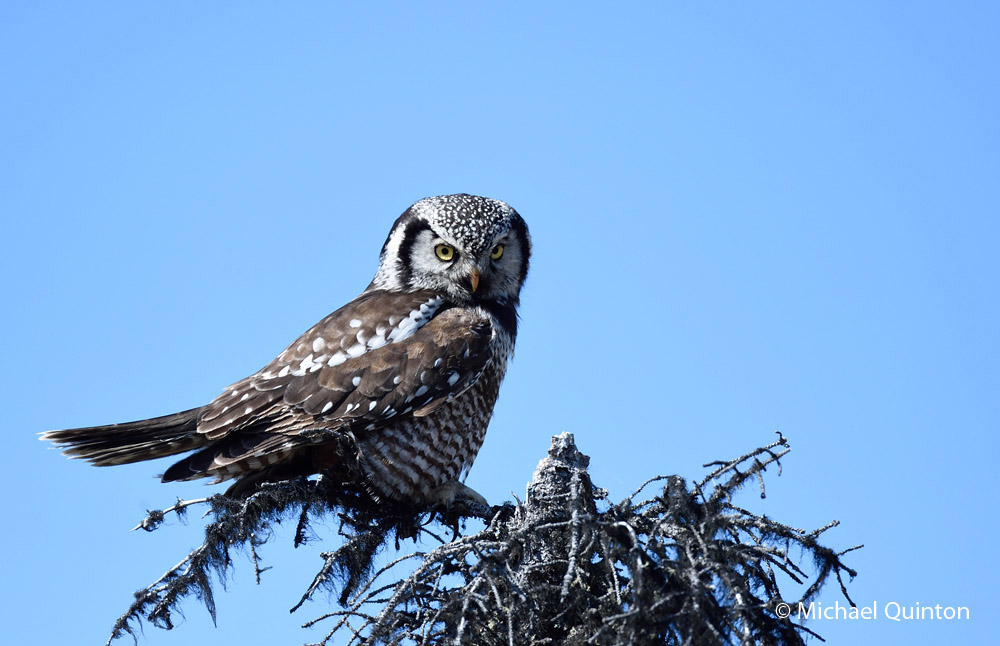 A hunting hawk owl perches on the top of a dead black spruce to watch for prey. If nothing catches their attention within a few minutes they will fly to a new perch.
A hunting hawk owl perches on the top of a dead black spruce to watch for prey. If nothing catches their attention within a few minutes they will fly to a new perch.
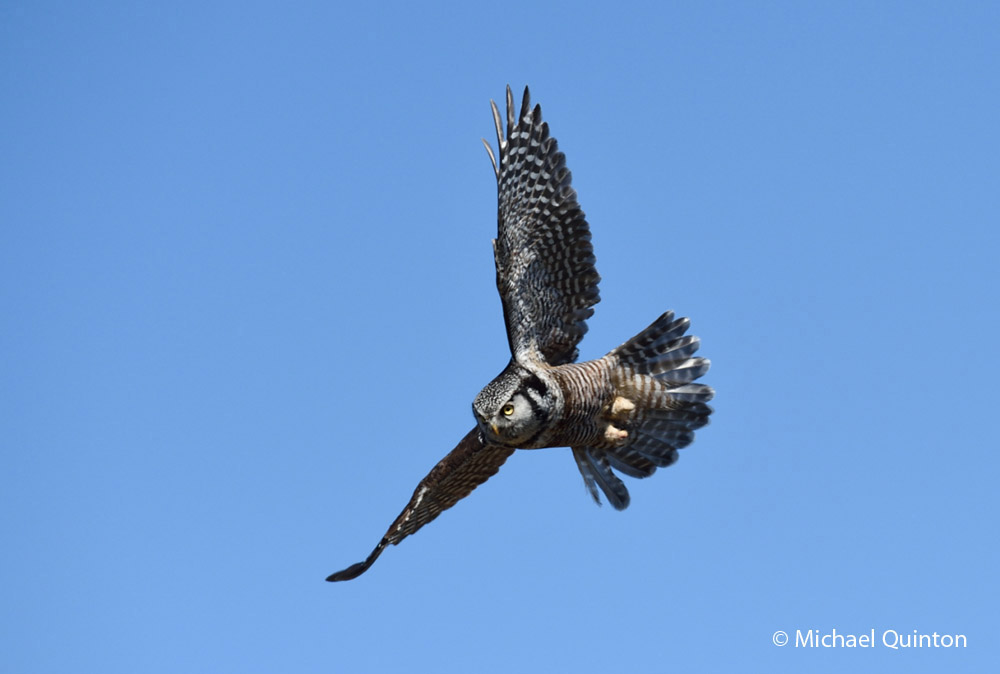 With a red-backed vole in his sights, the hawk owl launches.
With a red-backed vole in his sights, the hawk owl launches.
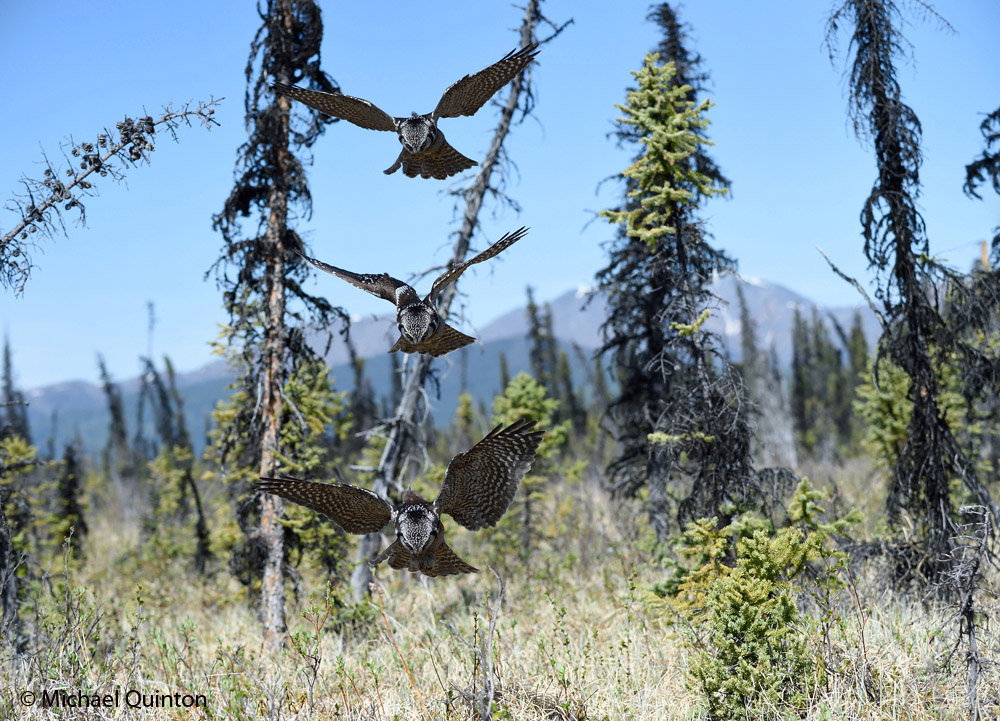 In this composite made from a sequence of three photographs, a male hawk owl drops straight down onto its prey.
In this composite made from a sequence of three photographs, a male hawk owl drops straight down onto its prey.
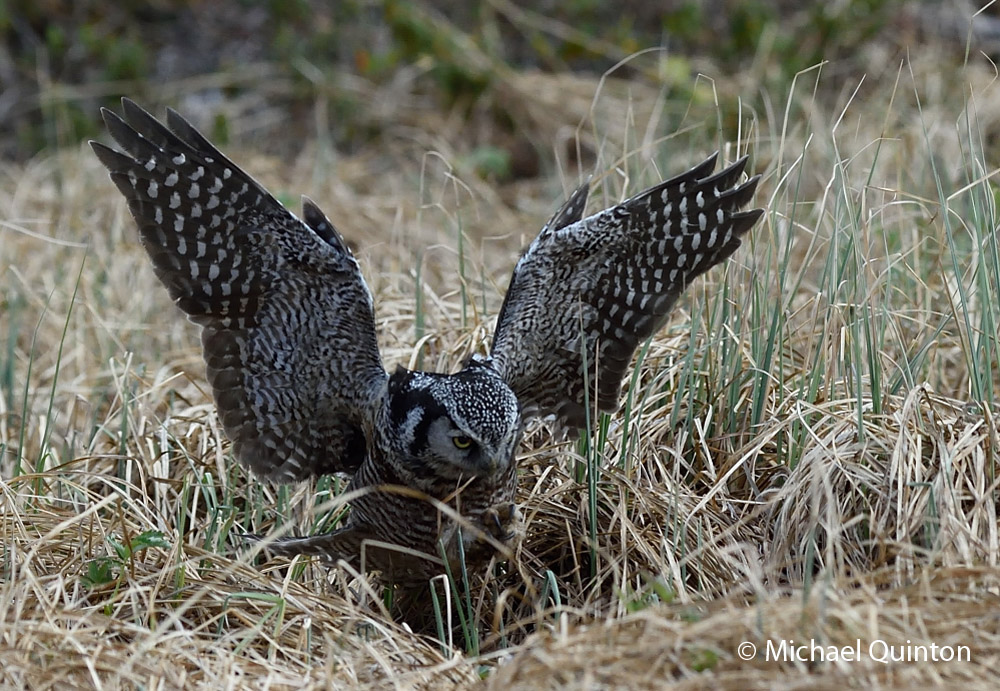 With its talons ready for the kill, a hawk owl slams into the wet, grassy bog where a foraging vole has caught his eye. Hawk owls are very accurate hunters and nearly fifty percent of their attacks lead to a kill. During the winter when snow covers the ground that success ratio drops.
With its talons ready for the kill, a hawk owl slams into the wet, grassy bog where a foraging vole has caught his eye. Hawk owls are very accurate hunters and nearly fifty percent of their attacks lead to a kill. During the winter when snow covers the ground that success ratio drops.
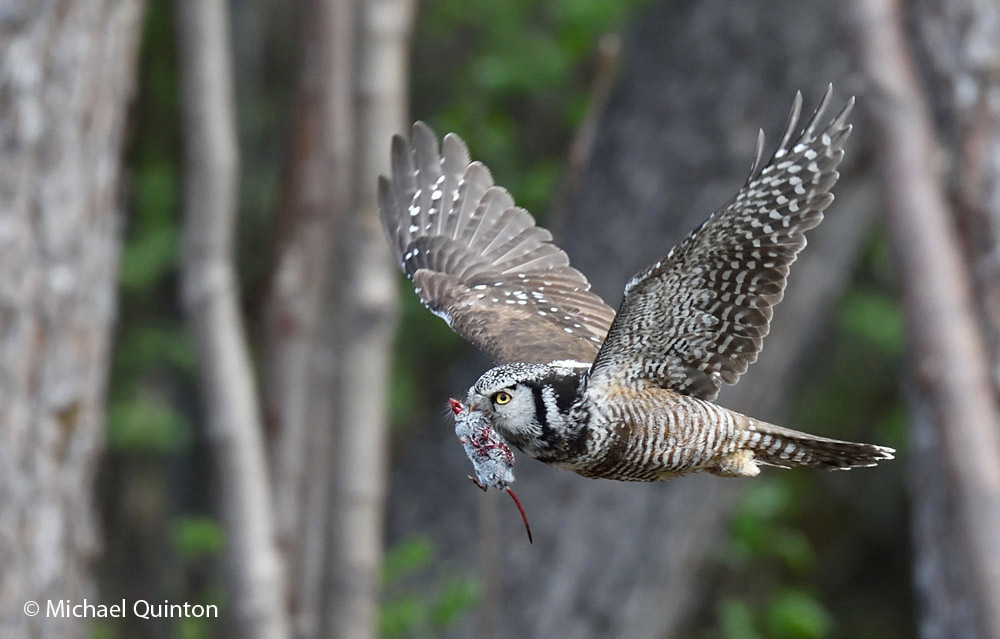 Northern water shrew makes up just a small percentage of a hawk owls prey.
Northern water shrew makes up just a small percentage of a hawk owls prey.
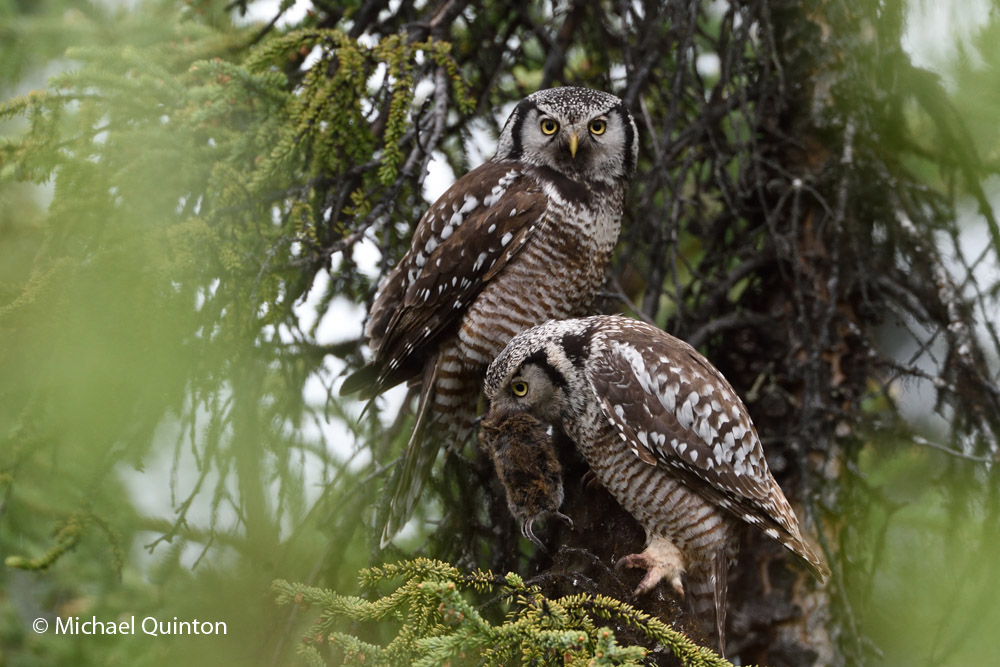 The male hawk owl has delivered another red-backed vole to his mate.
The male hawk owl has delivered another red-backed vole to his mate.
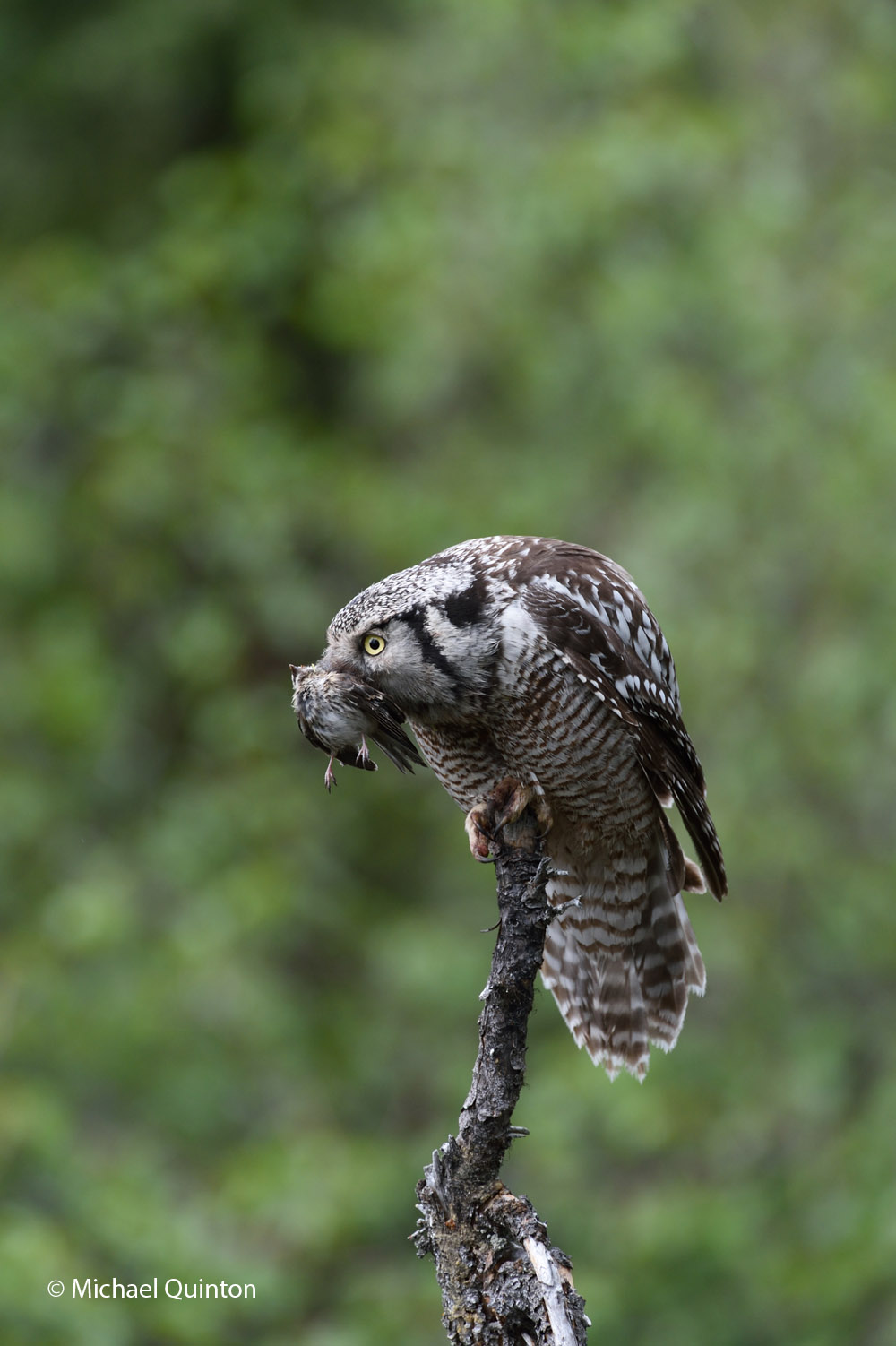 This small common red-poll is on its way to the owlets.
This small common red-poll is on its way to the owlets.
 A nest full of quick-growing hungry owlets require a lot of energy, and the male hawk owl does almost all of the hunting.
A nest full of quick-growing hungry owlets require a lot of energy, and the male hawk owl does almost all of the hunting.
